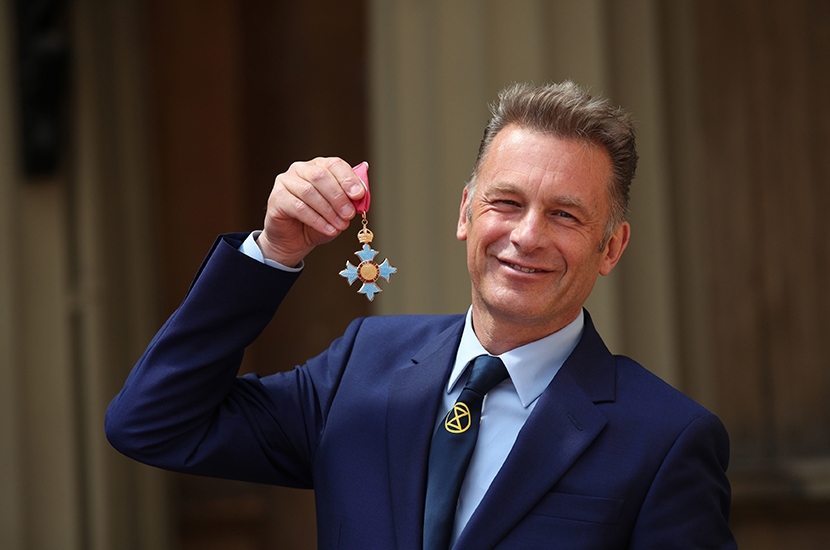Chris Packham is widely seen as the most extreme of well-known animal rights activists. His obsessions against hunting and shooting forfeit the impartiality required of a television nature presenter. So it is bold of the excellent new magazine, Fieldsports Journal, to give Mr Packham lots of space in its issue designed for the start of the grouse season this week. Photographed in a butt, Mr Packham not only grants an interview, but also contributes his own article, which begins with his almost lyrical description of holding a rifle (‘I lift the fore-end and feel its weight on the bulb of my left thumb…’). Not strictly relevant, since grouse are dispatched by shotgun, but his tone sounds conciliatory. ‘Let’s rapidly find equal and honest terms for a truce,’ he says. ‘Let’s stop fighting and start co-operating, use each other’s skills and knowledge to make more progress more rapidly.’ He does believe in culling and admits the need to ‘educate’ the protestors he often leads. It is not walked-up grouse, but only driven birds (what he — misleadingly, since grouse are wild birds — calls ‘grouse farming’) which he opposes. He agrees that curlew are better protected on grouse moors than on farmland. Are these tactics to weaken shooting’s resistance to him and paint himself as a moderate, or a genuine reaching out? I do not know, but it is always interesting when young fanatics get older and improve their knowledge. Facing facts, the more intelligent ones often change their minds. Country life is made to pay a high price, however, for their initial ignorance and self-righteousness. Handle Mr Packham with care, but also with interest.
Gilbert White of Selborne was the proto-giant of natural history. But he was also a bachelor curate with susceptibilities. Noticing my remarks about the use of the ‘x’ in emails to signify a kiss (Notes, 25 July), Philip Geddes, trustee of the Gilbert White and Oates Collections, writes from Hampshire to claim that White (300 years old this year) was the first person to use this symbol in a letter. In 1763, the Battie sisters, known as the three Sorceresses for their bewitching effect on men, descended on Selborne for the summer, living opposite White. Then aged 43, he was particularly taken with the 20-year-old Kitty Battie. He wrote to her: ‘You have not only a power of detaining men that ought to be going; but also of keeping those away that ought to come.’ He signs off: ‘I am, with many a xxxxxxx and many a Pater noster and Ave Maria, GiL.WHITE.’ In our troubled times, such suggestiveness by a clergyman more than twice her age might provoke Miss Battie to call in a safeguarding team. In 1763, she liked the letter well enough to keep it.
Safeguarding, indeed, has now become the obsession of the Church of England. It turns out that the Church’s National Safeguarding Team (NST) now has 27 ‘core groups’ investigating something or other. None is really answerable to anyone. Bishops act on the NST’s orders rather than the other way round. No one accused by the NST has proper rights of representation or appeal. This week, a worried group of senior churchmen, lawyers, victim support charities and academics has reported the Archbishops’ Council (in effect the C of E’s national executive) to the Charity Commission. It says the Council fails to fulfil its duties towards the victims of the NST. The authorities have only to invoke safeguarding for normal practices of openness and natural justice to go out of the window. Thus the long, expensive and cack-handed campaign to remove Martyn Percy as Dean of Christ Church decided to add safeguarding to its menu late in the day, deliberately plunging the whole issue into even deeper obscurity. These tactics inevitably undermine the reputation of those affected — such as Dr Percy and several bishops. Retired bishops are much worse treated than serving ones. So the new Archbishop of York, Stephen Cottrell, was excused his admitted failure of safeguarding as Bishop of Reading, whereas George Carey, former Archbishop of Canterbury, has lost his ‘permission to officiate’ on the orders of the NST without even knowing what he is supposed to have done or failed to do. The system is so obsessed with not losing face that it makes everyone else lose faith.
As one of the 36 new peers nominated for the House of Lords, I find myself the (unnamed) object of attack from the Electoral Reform Society, a body which issues remarkably virulent press releases. We new boys and girls, it says, have ‘grotesquely warped’ backgrounds. Perhaps they mean that several of us are pro-Brexit, a thing abhorred on the red benches. I wanted to hit back in kind, but I realised it is wiser to use the lingo of modern public service. Our peerages, I say sweetly, will improve ‘diversity’.
One keeps hearing, particularly on the BBC, that the United States is ‘the worst in the world’ for coronavirus, stated as fact. The next worse, by the same BBC measure, is Brazil. Not coincidentally, the BBC hates the presidents of both those countries. Statistically, this is fiction, although neither Trump nor Bolsanaro has done well. It is true that the US has more known cases than any other country, but comparisons are hard since figures in countries like China and Iran are highly unreliable. Besides, the key measure is proportion, not overall size. The most telling Covid-19 statistic is deaths per million of population. Currently, the United States stands at 498, Brazil at 485. The United Kingdom, however, comes in at 699. Belgium is the world-beater, at 864.
In these Notes (1 August), I asked whether anyone, apart from the Queen, is still alive today who was famous in the 1930s. Geoffrey Carr of the Economist has sent me an ingenious suggestion: the Dalai Lama. Born Lhamo Thondup in 1935, he was publicly proclaimed Dalai Lama in 1939. More than 80 years later, he is busily tweeting about world peace.







Comments